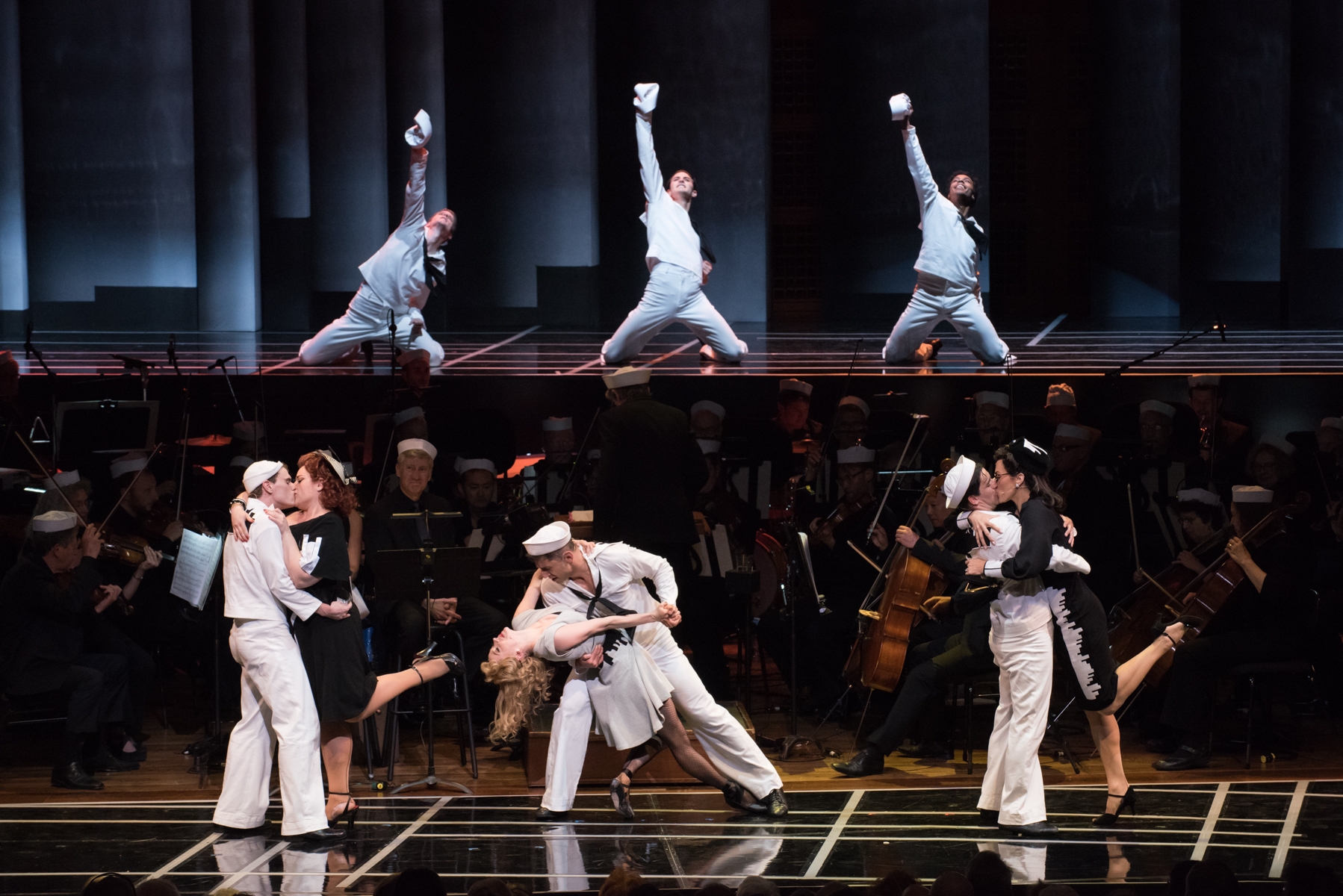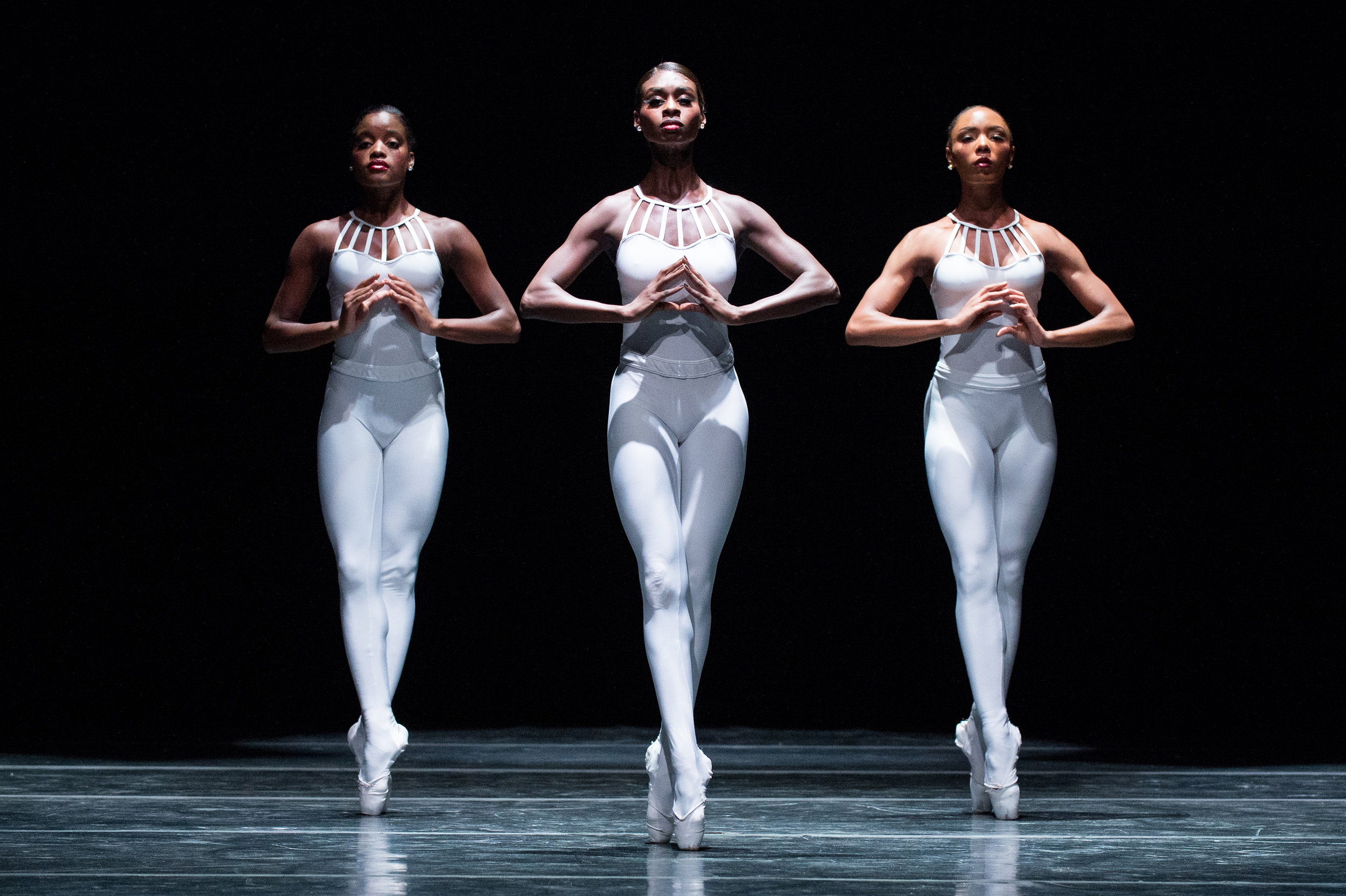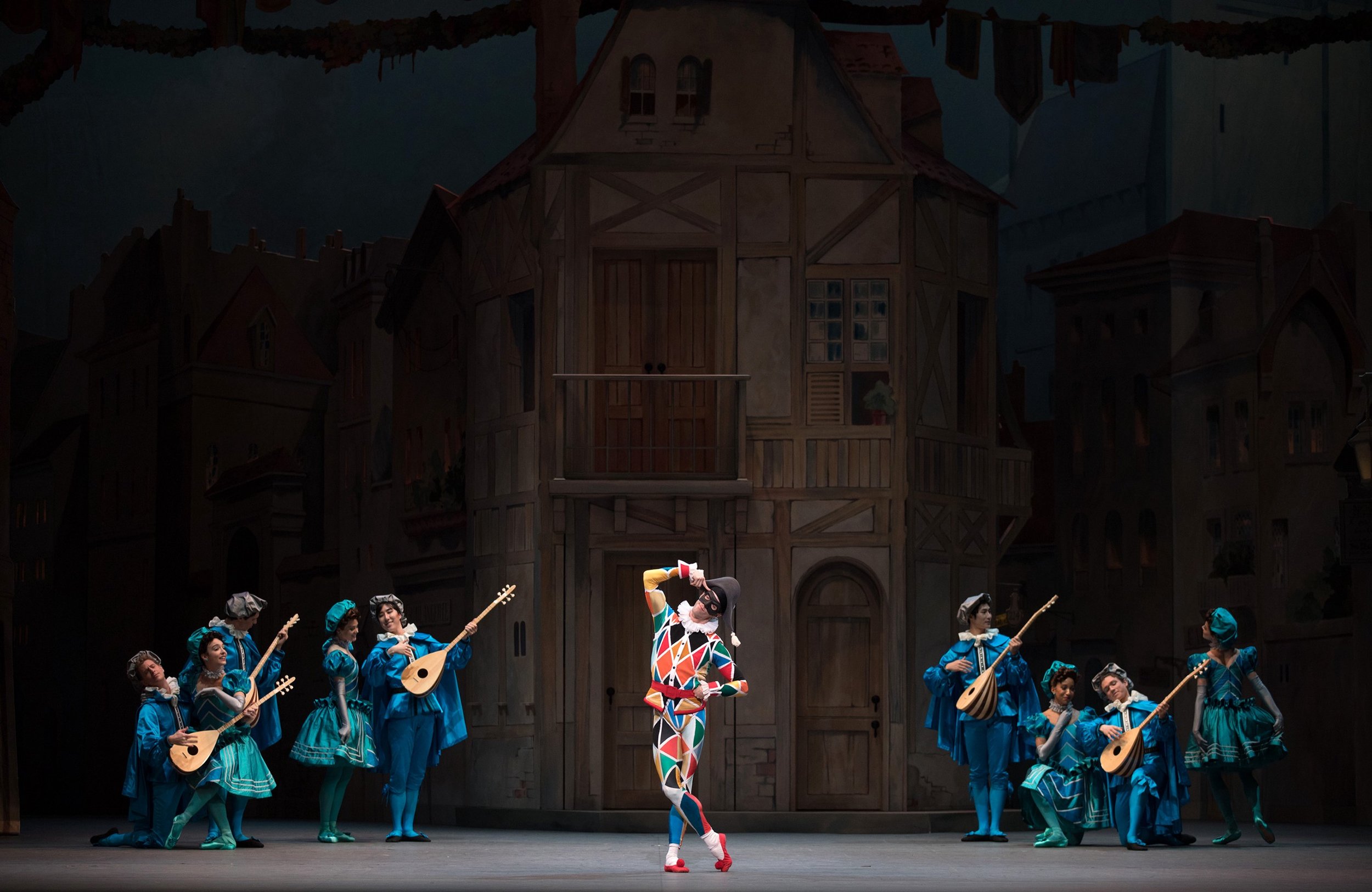Delirious Messiness

The Eventual Delirious Messiness of Trajal Harrell's "The Ghost of Montpelier"
Beyonce's "Crazy Right Now" and Rihanna's "Diamonds" feature prominently, along with music by the Doors, the Supremes, Lady Gaga, chansons francaises and dozens of other tunes that appear in the multilayered sound design. There's also voguing, butoh, the spirit of Vivienne Westwood, raffles, vegetables, toys, multiple breakings of the fourth wall, doppelgängers, a plea to support the arts, and an homage to Herb Ritts' 1988 photoshoot of Cindy Crawford (NSFW) for Playboy. Okay, maybe that last part is just my own selective memory at work, but in his slow to catch fire but ultimately electrifying The Ghost of Montpellier Meets the Samurai, choreographer Trajal Harrell throws so many disparate elements onto the stage that trying to keep up with where he's pulling them from requires some serious attention and memory mining. The experimental nature and high art/pop/low culture sensibilities of Harrell's work expands the boundaries of the kind of dance performances we usually see at Cal Performances, which presented the program, and are more in line with what Bay Area audiences often find in programs at venues like CounterPulse, ZSpace, or YBCA. That's a testament to both Harrell's stature within the dance world and Cal Performances' commitment to its ambitious RADICAL programming initiative, as well as an indicator of how dance is evolving.
The program's title references a recreation of a (fictional) encounter between Dominique Bagouet, the French choreographer and prominent figure in that country's "new dance" movement of the 1980s, and Tatsumi Hijikata, the founder of butoh, in a (fictional) NewYork bar, mediated by La MaMa's Ellen Stewart (again, a fiction). These fictional exchanges and interactions between dance legends are an ongoing theme in Harrell's work, and here he uses it to create post-postmodern riffs on history, identity, and memory. It doesn't matter that none of this actually took place, the thrill is in imagining the results of what might have happened if it did.
Hand that scenario to a more traditionally oriented mind, or a choreographer with a more circumscribed imagination, and the results might be confusing but rendered with an aesthetic clarity, or least something approaching that looks like some kind of precise thought went into the result. Harrell's precision reveals itself in how he stacks everything on an opposite approach, in how what actually might have arisen from such a meeting would be messy, disorienting, constantly in flux, and confusing even to its own protagonists (remember the setting is a bar, and its protagonists would likely be smashed). It would have as many elements that don't work out as those that do, perhaps more.
At the outset we're told we're not even going to see The Ghost of Montpellier Meets the Samurai, but something called Cannes Amour. Harrell, seated in the front row of the audience, interrupts, interjects, and eventually joins the performance on stage, even though the dancer Thibault Lac is performing as "Harrell." The piece unfolds with an initial shapelessness that tries the patience, and then, as if Harrell knows exactly where the point of the audience's exasperation lies, it suddenly turns, and what felt increasingly meaningless and meandering comes into clarity and reveals its playful assault on fake culture, impersonation, appropriation, acquisitiveness, and identity.
At this point everything comes deliriously unglued: the lighting is slightly off, with the dancers nearly always outside the center of the spotlight; the music (a soundtrack put together by Harrell) has other tracks going on the background, as if the person manning the mixing board forgot, or was unable, to finish the segues, creating ghosts in the machine as the dancers move to the track in foreground while others continue in the background; cross-dressing, undressing, cosplay and 130 bpm become the dominant aesthetics, the dancers twitching as if they're on a ferocious crack high with a rhythmic precision that's exhilarating to watch unfold, even if I couldn't begin to tell you what it was all supposed to mean. How could have this meeting of drunken, brilliant minds, re-envisioned in the present moment, gone otherwise?
It ends on the increasingly tiresome theatrical trend of involving the audience through turning up the lights and dancing along in the finale, though whether Harrell's spoofing this need for validation or succumbing to it was hard to tell. I suspect there are elements of both. Regardless, in this case it felt somewhat warranted as a means of bringing everyone in the house inside the illusion. Along with Harrell and Lac, the performers were Wei Ming Pak, Perle Palombe, Stephen Thompson, Christina Vassiliou, and Ondr˘ej Vidlár.
If you liked this, like A Beast on Facebook for more.





